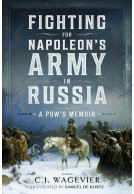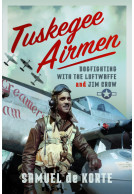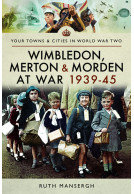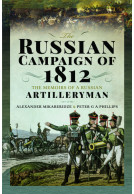The 614th Tank Destroyer Battalion (Hardback)
Fighting on Both Fronts
Imprint: Pen & Sword Military
Pages: 240
Illustrations: 20 black and white illustrations
ISBN: 9781399008686
Published: 7th March 2022
 Signed copy available – request a signature plate at the checkout
Signed copy available – request a signature plate at the checkout
Award News!
Finalist in the Army Historical Foundation Distinguished Writing Awards 2022
(click here for international delivery rates)
Order within the next 1 hour, 22 minutes to get your order processed the next working day!
Need a currency converter? Check XE.com for live rates
| Other formats available - Buy the Hardback and get the eBook for £1.99! | Price |
|---|---|
| The 614th Tank Destroyer Battalion eBook (6.2 MB) Add to Basket | £6.99 |
The 614th Tank Destroyer Battalion was activated on 25 July 1942 at Camp Carson, USA and, like many other tank destroyer battalions, would be sent to Europe. It saw combat in France, where a platoon earned the Distinguished Unit Citation, and later continued to fight gallantly in Germany and Austria until the war was over.
However, unlike many other tank destroyer battalions that fought in the Second World War, this unit was crewed only by black soldiers. The men had been subjected to racism from their countrymen during training, although the battalion did eventually win the respect of the white soldiers they fought alongside. When the third platoon deployed their guns on the slopes near Climbach, France, they weren’t just fighting against the Germans, but also against any prejudices that their white countrymen might have had.
Having earned the respect of the 103d Infantry Division, the 614th Tank Destroyer Battalion shared in their triumphs and tragedies. So when the division needed to retreat during a blizzard, or when Task Force Rhine pushed its way across the German plains, or when the division suffered heavy losses at Schillersdorf, the 614th Tank Destroyer Battalion was there with them.
Included in this book are lists of medals awarded to the men during the war, as well as a list of casualties and those that served in the unit.
Featured on WW2 Today
WW2 Today
'Their achievements were a testament to the valor and skill of Black soldiers who had to fight for their nation while battling racial discrimination within the military...I highly encourage you to read.'
The Black Veteran Newsletter
21stcent on Instagram
Samuel de Korte quickly immerses the reader into a fascinating intersection of two WWII niches few have explored: that of US Army tank destroyer battalions and the underappreciated contributions of African-American servicemen. The US Army, shamefully segregated at the time, formed eleven “colored” tank destroyer battalions during the war but only three were ever deployed overseas. De Korte choses to focus primarily on the 614th Tank Destroyer Battalion, a towed 75mm cannon outfit, —as this outfit enjoyed the longest combat history. At first viewed with skepticism through a dark lens of racial prejudice, the 614th was attached, nevertheless, to the 103rd Infantry Division in November 1944. After a brutal fight at Climbach, France, a few weeks later, the 3rd Platoon, C Company, 614th earned the prestigious Presidential Unit Citation and platoon leader Lt Charles Thomas, the Distinguished Service Cross (upgraded later to Medal of Honor). Afterwards, the 614th was proudly claimed by the 103rd command staff for the remainder of the war. Despite this hard-fought recognition, the members of the 614th endured the grating indignities of second-class social status during and after the war. De Korte gives numerous examples in a frank, factual prose—refreshingly free of the “woke” political bludgeon so many current historians feel must be pounded into their beleaguered readers. De Korte’s book is short, and I found myself wishing he had been able to include more firsthand accounts of the action. As an example, about a dozen 614th soldiers in total were taken prisoner by the Germans during the war. De Korte mentions these unlucky men held grave concerns the Germans might abuse them because of their skin color. It turns out the Germans feared them more than “white” soldiers and, evidently, treated them well. I wonder if these German fears might have been the result of prior experiences with French North African colonials in Italy and France—who were formidable and often brutal adversaries. I wish de Korte could have explored the experiences of these prisoners of war a bit more—but this may have been beyond the intended scope of his work. I understand, too, that after eighty years, all eyewitnesses have since passed on and may not have left any written record for him to explore. I am thankful to him for preserving what remains. The 614th finally has a worthy champion.
Jeff Danby
"Samuel De Korte offers a thorough and unfiltered look at a segregated unit’s World War II experience. From activation, to fighting on the battlefields of Central Europe, to returning home, the book illustrates the exemplary actions of the personnel in fighting for not only the liberty of Europe but also for liberty within their homeland."
Army History
Readers who are interested in World War II or black military history will definitely want to read this book.
The Journal of America’s Military Past
Samuel de Korte offers a thorough and unfiltered look at a segregated unit's World War II experience. From activation to fighting on the battlefields of Central Europe, to returning home, the book illustrates the exemplary actions of the personnel in fighting for not only the liberty of Europe but also for liberty within their homeland. Many soldiers experienced the same racism and segregation at home while traveling overseas to fight. The story of the 614th Tank Destroyer Battalion demonstrates the resolve of those soldiers serving within the unit and their experience fighting on two fronts for a victory that would eventually lead to the emergence of a new era in the postwar world. Although success on one was achieved much earlier, that victory provided the spark that would lead to victory on the home front.
Dr. Wesley R. Hazzard, Army History Magazine
Interview with the author as featured in
The Hellfighter Magazine
Buy the magazine here: https://thehellfighter.bigcartel.com/
As featured in article
19 Series
Newsletter, March Edition, availble at: https://19seriesclothing.com/2nd-bn-usabot-newsletter
Their story may have started out dark and gloomy, but it ended with pride and respect. The men of the 614th Tank Destroyer Battalion had a mission of their own to accomplish and this well-written piece will show readers exactly how they did it.
On Point: The Journal of Army History
A well-researched and fast-paced account of the unit's service, from activation and training through combat and deactivation.
The Historical Miniatures Gaming Society
This unit history delves into the training and deployment of an all-black tank destroyer battalion to Europe during WWII. In this case, the "fronts" refers to the Western front as well as as the discrimination front. The book also contains information about the two other all-black tank destroyer battalions sent to Europe (827th with M-18 Hellcats in France and 679th with towed guns in Italy).
AAR Wargaming Newsletter, October 2022
Activated in 1942, it took two years for the 614th to finally be sent to Europe. Using towed AT guns, it performed with distinction mostly alongside the 103rd division in France, earning respect in a series of hard-fought actions. Appendix C lists the various awards and medals earned by the battalion during its service.
One typo: "Start Sergeant" is probably "Staff Sergeant" (p200).
For tabletop gamers, the chapter on the Battle of Climbach includes OBs and two battle maps would make for a nifty scenario. One interesting tidbit for all you scenario designers: when the unit came upon a road with felled trees, it took a half hour to clear the obstruction (p62). No engineering unit required.
The book contains 26 black and white photos and two black and white maps.
The book offers a well-researched and fast-paced account of the unit's service, from activation and training through combat and deactivation.
Enjoyed it.
As featured on
The Point of Spear Podcast
"More than just a unit history, this book relates the struggles of its veterans against both racism and the German Army. The authors effectively balance these two sides of the 614th's war, giving the unit's members their just due while presenting them as men performing a duty and serving their country, just as millions of others did. The work is a fitting tribute to a group of soldiers who served their country honorably and well."
WWII History
The resulting book is both a useful unit history, and a good piece of social history.
History of War
Read the full review here
With the publication of "The 614th Tank Destroyer Battalion: Fighting on Both Fronts" by Samuel De Korte one of the overlooked aspects of World War II in the European Theatre, namely the role of African-Americans in the front lines of combat is revealed in meticulous detail. Further enhanced for the reader is the inclusion of three Appendices (List of men in the unit; List of Casualties; Medals and Citations), a five page listing of Literature & Sources, thirteen pages of Endnotes, and a twenty-seven page Index. Impressively well written, organized and presented, "The 614th Tank Destroyer Battalion: Fighting on Both Fronts" must be considered an essential and core addition to any personal, professional, community, college, or university library World War II History collection in general, and African-American Military History supplemental curriculum syllabus.
Midwest Book Review
Read the full review here
Review as featured on
Surfing Ann
Highlight: The author tells the story of the battalion from the very first beginning until the end. It's a story that is known with a very few people and therefore it is good that this book is written. It's a good addition to the many books that have already been written about the Second World War. The author shows with this book that not only white people fought in the Second World War, but also black people fought in the same war against the Germans.
Full review available at:
https://surfingann.blogspot.com/2022/08/the-614th-tank-destroyer-battalion.html
"...the role of African-Americans in the front lines of combat is revealed in meticulous detail."
Midwest Book Review, August 2022
"The images in The 614th Tank Destroyer Battalion are astounding. Most have never seen the light of day since their initial archival. These never-before published images make this work unique. Rather than being generic, they relate directly to the units and the men being discussed."
SirReadaLot.org, July 2022
As featured in
VaeVictis
This book follows the soldiers of the 614th during their time in France, in World War Two, with the difference being that they were an all black unit. Now at the time they faced enormous prejudice and racism from not only fellow white soldiers but the army top brass too. But to be honest this just spurred them on to be better than anyone else, if these guys were going to be victimised they were going to prove everyone wrong by being the best at what they did.
The History Fella
Now, this Tank Destroyer Battalion had its fair share of downs but it had many ups too, so much so that they earned the respect of fellow white soldiers and received a Distinguished Unit citation too. As usual, this case is like all others where black people are not given the respect and recognition they deserve and so they have to work harder in order to receive it from fellow white people. This book takes the reader through their war via a good number of personal accounts, reports, evidence and resources. Did I know about these soldiers and what they achieved, no sadly not. But having read this brilliant book I would like to read more and learn more. This has been a fantastic book, well written and very well researched and it feels like this book has been written by a committee wanting to get this out in the world. A thoroughly excellent read, there is little to fault in this book. I should add that at the back of the book all those black soldiers are listed and remembered and there is also a chapter that lists all the medals and citations received by these young men and what they achieved.
Read the full review here
Highlight: An excellent read, and full of previously unseen images and personal stories.
ARRSE
Full review available at: https://www.arrse.co.uk/community/reviews/the-614th-tank-destroyer-battalion.1750/
This is a fascinating and well researched book about African Americans serving in WW. Most people only know about the Red Ball Express or the Tuskegeee Airman, here is a much needed review of so many young men who helped to liberate Europe.
ARRSE (Army Rumour Service)
An excellent read, and full of previously unseen images and personal stories.
Read the full review here
Full book review
Dr. Alexander Clarke, YouTube
https://www.youtube.com/watch?v=FsPxKvTsUio
[10:40]
Highlight: 'It’s basically just cool. It does what Band of Brothers did for the Airborne, this does for the Tank Destroyers. Honestly, if the Tank Destroyers get a movie or a television show and it’s not based on this book, then there is something seriously wrong in the world.'
“The 614th Tank Destroyer Battalion” is a scholarly work where quite some research has gone into. The book provides some interesting perspectives on the doctrinal development and use of Tank Destroyers during WWII. It also gives a short historical overview of the use of segregated units within the US Army during WWII in general. This is followed by a chronological account of the key events experienced by one of the segregated units from its activation throughout the European theatre of war up until the end of WWII. Having read quite some books on WWII, this book provides some new interesting insights and is a recommended read.
Thijs ter Horst
The African-American World War II experience in one compelling book
Ruud Brujins
Books about the Second World War often focus on the vanguard forces like armour and paratroopers and rarely on the less glamourous branches of the army. The American tank destroyer arm was one of such branches. Raised as a countermeasure for the imagined German tank fleets, it became an orphan of the army when the German armoured threat did not materialize. Within the tank destroyer arm, the ‘colored’ or ‘negro’ troops were orphans within a superfluous force. It is in this light remarkable that Samuel de Korte managed to write a compelling history of one of these ‘black’ destroyer battalions.
Military historian Samuel de Korte [follow him: De Korte Geschiedenis] wrote his thesis about the representation of African-American soldiers during the Second World War. He uses his extensive knowledge about the war experience of African-Americans to write a unit-history of the 614th Tank Destroyer Battalion. These soldiers did not only had to fight the Germans on the battlefield but also fight against the prejudices of their fellow White citizens. African-Americans were widely seen as inferior in the 1940s and these perceptions were also widespread within the military. African-Americans were discouraged from combat training and often relegated to rear-guard duties like the ordnance branch.
The fact that the tank destroyer force soon after its inception proved to be superfluous made the position of the African-American battalions rather precarious. These battalions seemed first in line for disbandment, which was bad for morale. The fact that African-American battalions were also less likely to be sent overseas was also not very encouraging – why would you perform in training if the chance of deployment in battle was very low? De Korte describes vividly the experience of African-Americans in training, the discrimination in the army and the disappointments of the many postponements in shipment oversea.
The 614th Tank Destroyer Battalion finally arrived in Lorraine in November 1944 as a unit with towed cannons rather than self-propelled guns. As a result, they were used as direct artillery support for the infantry in the frontline rather than their intended anti-tank role. The description of their experience in Alsace-Lorraine between November 1944 and March 1945 gives an unique insight in the war on that front, including the German counterattacks in January 1945. The 614th Tank Destroyer Battalion matured quickly and proved itself to be a valuable asset. They became a valued support for the 103th Infantry Division and got praise from the chain of command up to the general of the 7th Army himself.
Samuel de Korte did a great job in collecting such a rich array of sources, from archival material to soldier’s letters and newspaper clippings. By the end of the book, you have a clear understanding of the wartime experience of both the tank destroyer branch as the role of the African-Americans soldiers within that branch. In the final chapters, he even makes a comparison with similar tank destroyer battalions and he tells about the post-war experience of the many veterans. The African-American soldiers generally came back with more self-confidence and often played an important role in the organisation of the African-American community on a local level.
The book is an easy read for a wide audience but it contains a lot of gems for the more experienced reader regarding the Second World War. It is a standard work in the understanding of the war experience of the African-American soldier in both their personal experience as their unit combat performance. Reading this more than 200 page book has certainly taught me a lot! Besides the valuable reading experience, the book contains a nice section of photographs and is printed in hardcover with a beautiful full-colour dustjacket. Warmly recommended!
About Samuel de Korte
Samuel de Korte is a graduate student of Utrecht University, where he studied an MA in the Cultural History of Modern Europe, and in his spare time enjoys researching or writing articles about popular history. He wrote his Master's thesis about the representation of black Americans during the Second World War in contemporary media, indicating that although they formed a substantial part of the American armed forces, they don't receive an equal share in the representation. His research provided the starting point for this book.



















